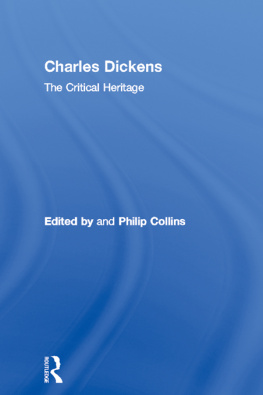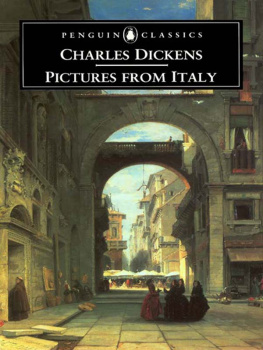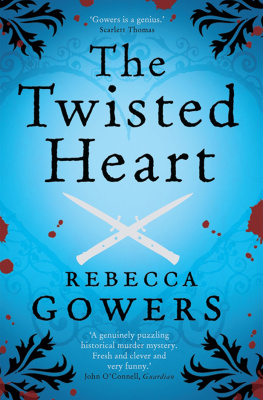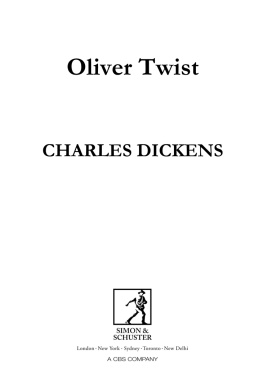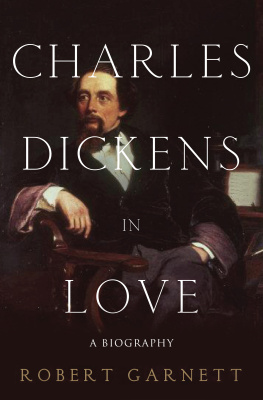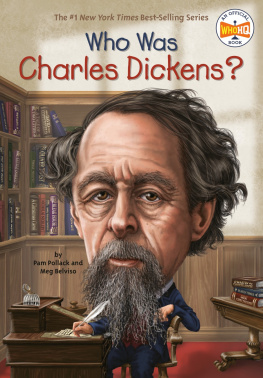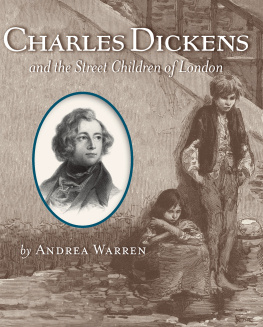Dickens Charles - Sketches of Young Gentlemen and Young Couples
Here you can read online Dickens Charles - Sketches of Young Gentlemen and Young Couples full text of the book (entire story) in english for free. Download pdf and epub, get meaning, cover and reviews about this ebook. year: 2012, publisher: Oxford University Press, genre: Art. Description of the work, (preface) as well as reviews are available. Best literature library LitArk.com created for fans of good reading and offers a wide selection of genres:
Romance novel
Science fiction
Adventure
Detective
Science
History
Home and family
Prose
Art
Politics
Computer
Non-fiction
Religion
Business
Children
Humor
Choose a favorite category and find really read worthwhile books. Enjoy immersion in the world of imagination, feel the emotions of the characters or learn something new for yourself, make an fascinating discovery.

- Book:Sketches of Young Gentlemen and Young Couples
- Author:
- Publisher:Oxford University Press
- Genre:
- Year:2012
- Rating:4 / 5
- Favourites:Add to favourites
- Your mark:
- 80
- 1
- 2
- 3
- 4
- 5
Sketches of Young Gentlemen and Young Couples: summary, description and annotation
We offer to read an annotation, description, summary or preface (depends on what the author of the book "Sketches of Young Gentlemen and Young Couples" wrote himself). If you haven't found the necessary information about the book — write in the comments, we will try to find it.
Sketches of Young Gentlemen and Young Couples — read online for free the complete book (whole text) full work
Below is the text of the book, divided by pages. System saving the place of the last page read, allows you to conveniently read the book "Sketches of Young Gentlemen and Young Couples" online for free, without having to search again every time where you left off. Put a bookmark, and you can go to the page where you finished reading at any time.
Font size:
Interval:
Bookmark:
SKETCHES OF YOUNG LADIES YOUNG GENTLEMEN AND YOUNG COUPLES
CHARLES DICKENS
WITH
SKETCHES OF YOUNG LADIES
BY
EDWARD CASWALL
ILLUSTRATED BY
PHIZ


Great Clarendon Street, Oxford ox2 6DP
Oxford University Press is a department of the University of Oxford. It furthers the Universitys objective of excellence in research, scholarship, and education by publishing worldwide in
Oxford New York
Auckland Cape Town Dar es Salaam Hong Kong Karachi Kuala Lumpur Madrid Melbourne Mexico City Nairobi New Delhi Shanghai Taipei Toronto
With offices in
Argentina Austria Brazil Chile Czech Republic France Greece Guatemala Hungary Italy Japan Poland Portugal Singapore South Korea Switzerland Thailand Turkey Ukraine Vietnam
Oxford is a registered trade mark of Oxford University Press in the UK and in certain other countries
Published in the United States by Oxford University Press Inc., New York
Introduction Paul Schlicke 2012
The moral rights of the author have been asserted
Database right Oxford University Press (maker)
First published 2012
All rights reserved. No part of this publication may be reproduced, stored in a retrieval system, or transmitted, in any form or by any means, without the prior permission in writing of Oxford University Press, or as expressly permitted by law, or under terms agreed with the appropriate reprographics rights organization. Enquiries concerning reproduction outside the scope of the above should be sent to the Rights Department, Oxford University Press, at the address above
You must not circulate this book in any other binding or cover and you must impose this same condition on any acquirer
British Library Cataloguing in Publication Data
Data available
Library of Congress Cataloging in Publication Data
Library of Congress Control Number: 2011934717
Typeset by RefineCatch Limited, Bungay, Suffolk
Printed in Great Britain
on acid-free paper by
Clays Ltd, St lves plc
ISBN 9780199603282
1 3 5 7 9 10 8 6 4 2
BY the summer of 1837 Charles Dickens had shot to fame like a rocket (in the words of an early reviewer) and was well on his way to becoming the hottest literary property of the century. Sketches by Boz, which collected in three volumes the newspaper and magazine pieces he had been producing piecemeal since 1833, had been published in two series in February and December 1836 to rapturous reviews, and The Pickwick Papers, commissioned in response to that first success, was appearing in its fifteenth monthly serial part, to even greater acclaim. Oliver Twist had begun its monthly run in the pages of Bentleys Miscellany, which Dickens was editing. By then he had also written and produced three plays and an anonymous pamphlet, but it was his serial publications which were the primary sensation.
Eager to expand their fledgling company and to exploit the success of their star writer, Chapman and Hall, the publishers of Pickwick, brought out a collection of brief vignettes called Sketches of Young Ladies, by a pseudonymous author, Quiz, with engravings by Hablot Browne (Phiz). It sold splendidly, having reached its eighth edition within just over a year, and Dickens, writing anonymously (he was under contract to Richard Bentley, his Oliver Twist publisher, not to bring out anything additional with a rival publisher), six months later produced a sequel, Sketches of Young Gentlemen, which also
The journalistic format of short fiction, essays, sketches, serials, and miscellaneous writings was very much the dominant mode of publication in the 1830s. Whereas Sir Walter Scotts Waverley novels, commencing in 1814, had led the ascendancy of works of long fiction in the early nineteenth century, the publication of novels declined dramatically following the bankruptcy in 1826 of the firms of Archibald Constable and James Ballantyne, publisher and printer respectively of Scotts works. In place of novels, a veritable deluge of sketch writing flooded the field in the 1820s and 1830s, both as single pieces in newspapers and magazines, and as collections in volumes. Writers largely forgotten today, such as Theodore Hook, Thomas Hood, John Poole, and Robert Surtees, produced sketches which competed with the longer-lasting achievements of Washington Irvings Sketch Book (181920), Mary Russell Mitfords Our Village (1824 32), William Makepeace Thackerays Paris Sketch Book (1840)and of Dickenss works. It is this context which underlies the publication of all of Dickenss novels as monthly or weekly serials, as he developed his own distinctive talents within the publishing conditions of his day.
But that is to jump ahead. By 1837 Dickens had written sixty sketches as Boz;
The first of these three little works, Sketches of Young Ladies, was written by a young literary aspirant, Edward Caswall (181478). As an undergraduate at Brasenose College, Oxford, Caswall neglected his studies to produce The Oxonian, a series of sketches published in the Metropolitan
Having adopted the pseudonym Scriblerus Redivivus (the satirical writer come back to life) for Pluck, for Sketches of Young Ladies Caswall called himself Quiz, a name indicating a witty fellow who mocks or ridicules. The sketches consist of twenty-four brief descriptions of a variety of types of contemporary young middle-class females, described by an adolescent male, Mr. P, whose observations are based mainly on witnessing young women at social gatherings. There is only occasionally any of the individuation which makes Dickenss character sketches so memorable, and each sketch concludes with a moral assessment of the subject under scrutiny. But the content and manner of these sketches led admiring reviewers to praise them as rather droll (York Herald, 8 July 1837) and pleasing (Hull Packet, 14 July 1837). In many respects these caricatures come so nearly to life, wrote another reviewer, that we humbly think some young ladies might here and there find a hint for the improvement of their habits or their manners (Sheffield Independent, 19 August 1837).
The Preface, attributed to M. P.initials with no known referentannounces the purpose of the work, namely to set forth the classification of young ladies according to the Linnan system, a philosophical theme which, he ironically laments, has been neglected by the foremost authorities of the age, and which (he maintains) has been erroneously described by another. The Linnan system is a methodology established by Carl Linnus, the Swedish botanist and zoologist, who founded modern taxonomy and binomial nomenclature, and the authorities Caswall accuses of neglect of his important subject are among the foremost scientists of the age. Georges Cuvier, Dionysius Lardner, and Mary Somerville had all published notable works on aspects of natural history and the physical sciences. And Caswall facetiously accuses William Buckland, dean of Westminster, the author of the first account of a dinosaur fossil and a leading proponent of creationism, of the error of mistaking troglodytes for ichthyosauri. In fact, Buckland writes learnedly about the ichthyosaurus, an extinct giant marine reptile resembling a fish (the first fossilized remains were found in 1811 by Mary Annig in Lyme Regis), but not at all about troglodytes, or cavemen.
Next pageFont size:
Interval:
Bookmark:
Similar books «Sketches of Young Gentlemen and Young Couples»
Look at similar books to Sketches of Young Gentlemen and Young Couples. We have selected literature similar in name and meaning in the hope of providing readers with more options to find new, interesting, not yet read works.
Discussion, reviews of the book Sketches of Young Gentlemen and Young Couples and just readers' own opinions. Leave your comments, write what you think about the work, its meaning or the main characters. Specify what exactly you liked and what you didn't like, and why you think so.

